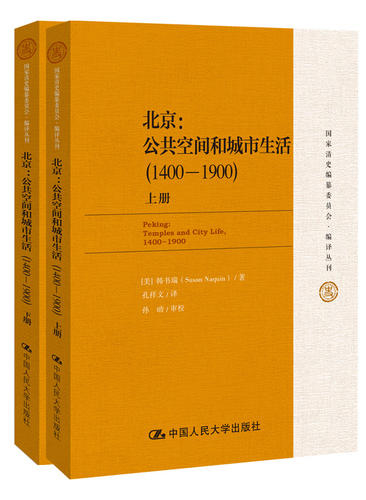History of Beijing connected with local temples

Peking: Temples and City Life, 1400–1900
Beijing was chosen by the Emperor Yongle as the capital of the Ming Dynasty in the early 15th century. Since then, Beijing has been China’s political, economic and cultural center.
Scholars usually study the history of a city from the perspective of economic development or political change. Susan Naquin unexpectedly chooses the temple as her entry point for research in this book. Peking: Temples and City Life, 1400–1900 studies the religious activities and customs of the Ming and Qing dynasties in Beijing based on local temples, and it explains how people of different classes and regions of Beijing during those times gradually merged together and formed an urban identity.
The perspective of the temple is effective for exploring the history of Beijing. During the Ming and Qing dynasties, Beijing was a common living space for people from the royal family to the common civilian. Public spaces such as parks, zoos, theaters and teahouses connected the various calsses. However, during the Ming and Qing dynasties, the public space of Chinese cities was very limited, and far from as developed as urban centers in Europe and North America. In this sense, it can be said that the temple was a center of urban life. In addition to functioning as a religious platform, it also functioned as a poorhouse, market, library, social area and tourist spot.
During the Ming and Qing dynasties, the number of temples in Beijing expanded very fast. In Peking: Temples and City Life, 1400–1900, the author points out that from 1400 to 1900, there were more than 2,500 recorded temples in Beijing and its suburbs. The actual number may be at least 30% more. The author explores the various functions of the temple and shows how the temple became an activity center for community building. The “temple” mentioned in this book refers to not only a Buddhist temple, but a venue for all kinds of religious beliefs.
The author argues that by 1600, Beijing had formed its own cultural features with thousands of people traveling to or living in the city. There may have been up to one million people who called Beijing home at that time. Different people in this city had formed their urban identity in Beijing. After the Qing government occupied Beijing, it re-planned the city layout, forced people to relocate, and divided the various classes into relatively independent settlements. This isolation forced people to rethink the urban identity of Beijing. After the adjustments of the 17th and 18th centuries, the separated populations began to mix and developed their own culture beyond the royal realm.
edited by YANG LANLAN

 PRINT
PRINT CLOSE
CLOSE